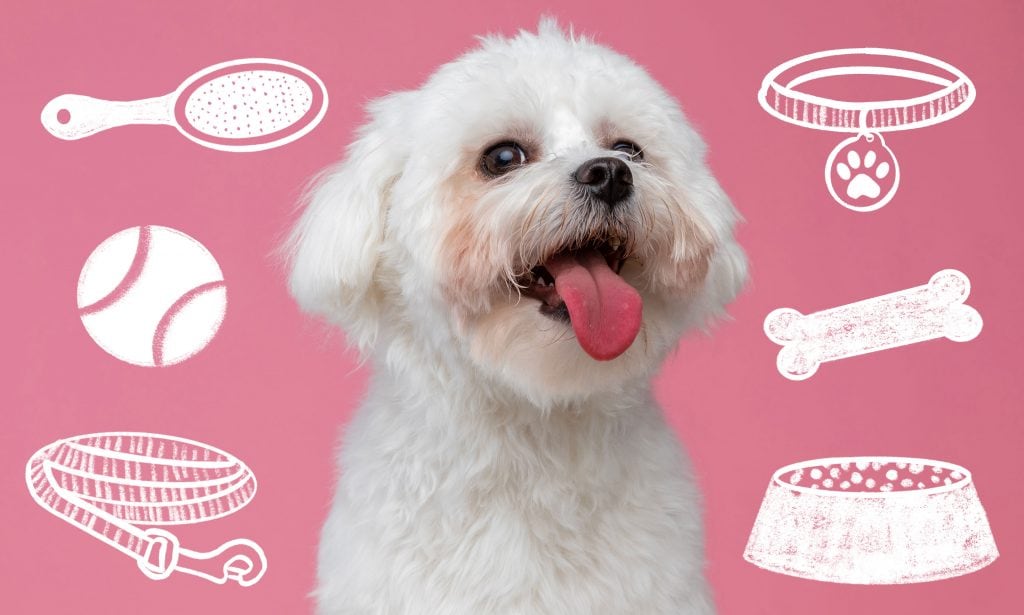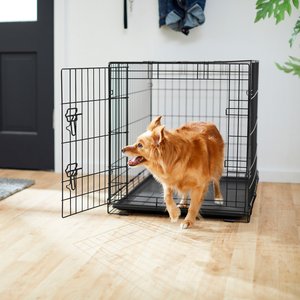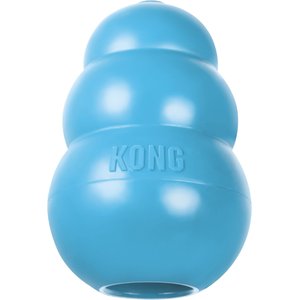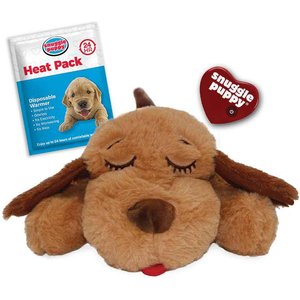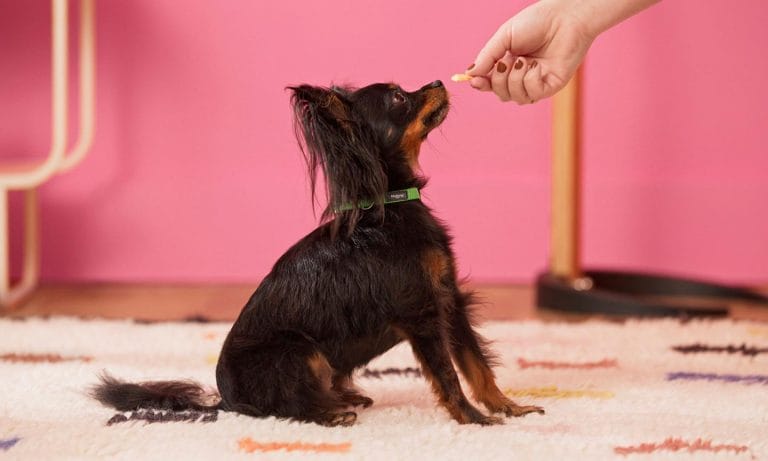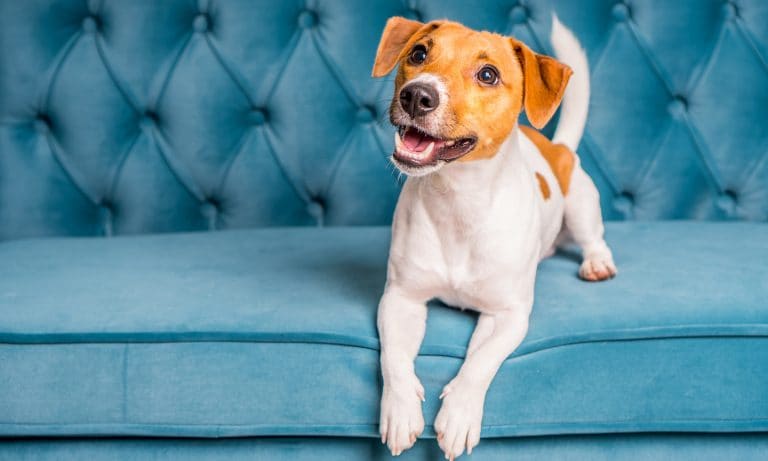Bringing home a new puppy is exciting—but it can feel a bit daunting, especially if you've never had a dog before. A little advance preparation to ensure all the essentials are in place, however, can make for a smooth and enjoyable homecoming. Below you’ll find our New Puppy Checklist to help you welcome your new puppy into your home and family.
New Puppy Checklist
1Safe Places to Play and Sleep
Dog crates and playpens give puppies a secure space to rest and play.
“Puppies need places where they can be safely confined until they learn their house manners, which may not be for more than a year,” says Barbara Davis, CPDT-KA, CDBC, of BADDogsInc Family Dog Training & Behavior in Corona, California.
Plus, crates and pens help to keep your pup from chewing and peeing inappropriately.
A common misconception is that these secure places must be large to be effective, but your pup’s crate only needs to be big enough for your dog to stand up and turn around, Davis says. Some crates, like Frisco’s Fold & Carry dog crate, come with a divider so you can adjust the size of their space—buy the size they're likely to need when they're an adult, and then move the divider as they grow.
While your dog's crate is a place for rest and relaxation, exercise pens are exactly what they sound like: bigger fenced-in areas, similar to playpens for kids, that give your pup a place to play and run around safely while you’re busy doing other things.
Temporarily out of stock
2A Supply of Healthy Food and Treats
There's more to choosing the right dog food than randomly picking up a bag of kibble at the supermarket. Dog nutrition is at least as complex as human nutrition, Davis says, and the spectrum of choices is huge. Because every dog has unique needs, ask your veterinarian for recommendations.
No matter which food you choose, make sure you're feeding the correct amount. Puppies usually need at least three meals a day, says Alana Stevenson, a certified animal behavior specialist and dog trainer in the Boston, Massachusetts area.
It's a good idea to have treats on hand, too, to help with training (and just to show your pup a little love every so often. Remember factor treats into their nutritional plan, too.
3A Sturdy Collar and Leash
It's important to choose a collar and leash sized appropriately for the breed and age of your pup. An adjustable dog collar is best at this stage since your puppy will grow quickly.
Remember to regularly examine the collar for condition and fit. You should be able to slip two fingers underneath the collar but not so loose that it can slip over a puppy’s head.
As with the collar, choose a leash that complements your pup’s size. Most trainers recommend a leash of no longer than 6 feet while your puppy is learning proper leash walking. The material also matters: Some pet parents find rope is most comfortable on their hands, while chain leads work well for puppies who like to chew or carry the lead in their mouths. Traditional leather leads often require upkeep like oiling or saddle soaping to stay clean and supple.
Find out more information about the proper fit of pet collars and leashes here.
4ID Tags
All dogs need ID tags. Don’t be fooled into thinking your dog doesn’t need identification because they're an “indoor dog;” if your dog gets lost accidentally, you want a speedy reunion and ID tags help. A 2011 study, led by Emily Weiss of the American Society for the Prevention of Cruelty to Animals, concluded that ID tagging is an effective method for potentially decreasing the chances that stray dogs will end up in a shelter and instead make their way home.
Plus, depending on where you live, your puppy may be required to wear an ID tag by law.
Make sure this info is on your dog's tag:
- Their name
- Your phone number
- The city where you live
If space allows, consider adding this info too:
- Your full address
- The phrase "Needs Meds" (if your puppy requires medication)
- "Microchipped" (if your puppy has a microchip that can help locate you)
5Food and Water Bowls
Eating and drinking are pretty basic needs, right? So your puppy will need food and water bowls from the get-go.
Non-slip bowls minimize spills, and some veterinarians recommend an elevated dog bowl to give your puppy more comfort when eating. Stainless steel and stoneware or ceramic dog bowls are good choices because these dog bowls are easy to clean, dishwasher-safe and easily can be sanitized.
6Play Toys and Chew Toys
Puppies sleep a lot, but when they’re awake, they play like it's their full-time job. To keep your pup mentally stimulated, provide them with a variety of dog toys that incorporate all kinds of textures, sounds and shapes.
Exposing them to different toys helps to socialize them to remain calm and accepting of differences in their environment throughout their lives, Davis says.
Since puppies start chewing right after weaning, a habit that only intensifies during teething time, dog chew toys are a must. Davis recommends puppy-sized toys by KONG—especially the hollow ones so you can smear a dab of cheese or peanut butter inside—as well as bully sticks and frozen carrots. Here's how to find the best KONG for your dog and to know more about what bully sticks are and if they're safe for puppies.
7Comfort Toys
It’s common for new puppies to struggle the first few nights in a new home. On top of being in a new environment, they might be missing their siblings. It can be a difficult transition, Davis says. “Comfort toys, like [Smart Pet Love’s] Snuggle Puppy, usually contain an electronic device that simulates the sound and feel of a heartbeat,” she says, “as well as a small heat pack that provides a source of warming that mimics the closeness of the littermates he’s left behind.”
8Toy Box
Maintain order and reduce dog-toy clutter with a large and shallow dog toy storage bin, Stevenson recommends. “Your puppy should have easy access to toys and the bin in an obvious location, especially where people hang out with the puppy,” she says. “This prevents the puppy from chewing on unwanted items and directs him to chewing on his toys only.”
9Patience and a Plan
Your puppy might seem subdued and mellow for the first few days—but give it time. As they get more comfortable in your home, their true personality will emerge.
“Puppies are full of energy and can be quite a handful,” Stevenson says. “They play-bite, chew and will pee in the house until they are house-trained. Realize that some of it is development and some behaviors, such as attacking your legs and chewing on your hands, will decrease—if you handle them humanely and correctly.”
That’s why every new puppy parent needs a training plan. “Whether you work with a trainer or not—and I absolutely recommend finding a great trainer—your pup is an intelligent and inquisitive creature who will need a steady stream of mental stimulation throughout their life,” Davis says. “Part of this can be satisfied by toys and play, but nothing beats learning new things, having interesting new experiences and having puzzles to solve. Remember, if you don’t give the dog something to think about, they'll certainly think up something on their own.”
Some dog trainers, behaviorists and pet product retailers offer classes for prospective dog parents that go over training and gear essentials. Attending one can help you plan for the arrival of your new canine companion properly, as well as how to set the stage for a great beginning to your new life together.
More Puppy Prep
Share:
